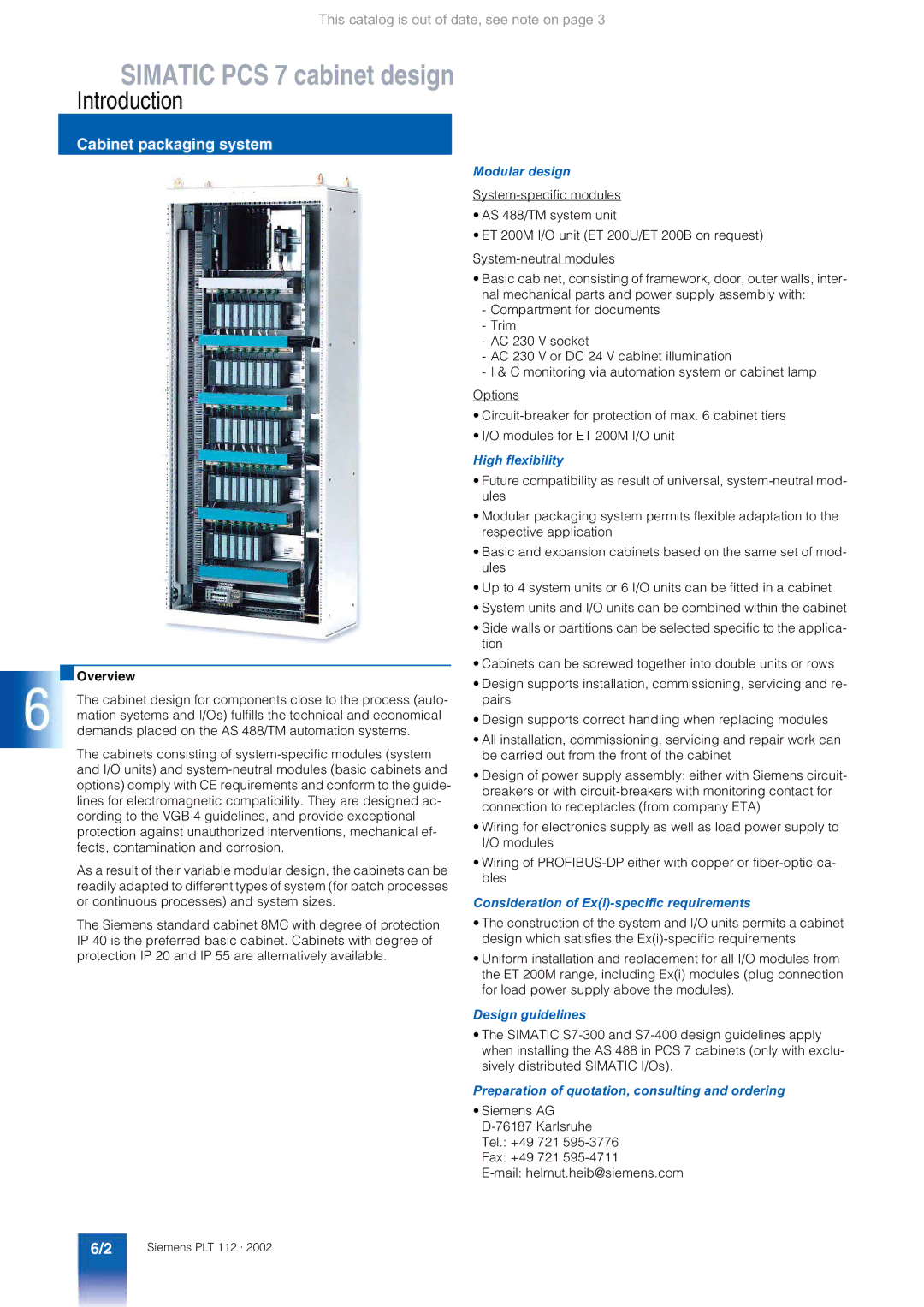AS 488/TM specifications
The Siemens AS 488/TM is a cutting-edge solution in the realm of industrial automation and control. Designed specifically for high-performance applications, this device serves as a programmable logic controller (PLC) offering enhanced capabilities for process automation. The AS 488/TM stands out in the marketplace for its robust architecture, sophisticated features, and compatibility with various industrial protocols.One of the pivotal features of the Siemens AS 488/TM is its integrated communication capabilities. It supports multiple communication protocols, such as Profibus, Profinet, and Ethernet/IP, facilitating seamless integration within diverse industrial environments. This flexibility ensures that the AS 488/TM can communicate with various devices, sensors, and actuators, providing a comprehensive solution for modern manufacturing needs.
In terms of processing power, the AS 488/TM is equipped with a high-performance CPU that can handle complex algorithms and data processing with ease. This enables the controller to manage intricate automation tasks, from simple control functions to complex multi-axis motion control. The device also comes with expandable I/O options, allowing users to tailor the system to meet specific application requirements. With a wide range of digital and analog inputs and outputs, the AS 488/TM ensures accurate monitoring and control of various processes.
Another notable characteristic of the AS 488/TM is its user-friendly programming interface. Siemens has developed the TIA Portal (Totally Integrated Automation Portal), a software platform that simplifies the programming and configuration of the PLC. This intuitive interface allows users to program the device using various programming languages, including Ladder Logic, Function Block Diagram, and Structured Text. The TIA Portal enhances productivity by providing simulation tools for testing and debugging applications before deployment.
The AS 488/TM also emphasizes safety and reliability. It complies with international safety standards and incorporates features that ensure safe operation in critical applications. Redundant power supplies and fail-safe mechanisms are integrated to minimize downtime and protect both personnel and equipment.
Moreover, the Siemens AS 488/TM is designed with future scalability in mind. As industries evolve and technology advances, the AS 488/TM can adapt to new requirements, ensuring a long service life and ongoing relevance in a rapidly changing landscape. Overall, the Siemens AS 488/TM is an impressive PLC that combines innovative features, robust technology, and flexible integration capabilities, making it an ideal choice for modern industrial automation systems.

